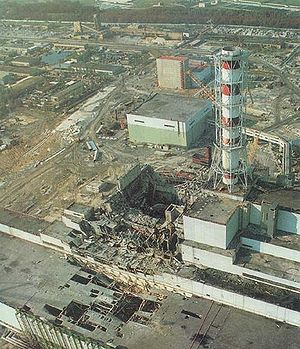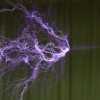Is Nuclear Power Safe?
Could this happen again? Of coures it could!

Once again, Obama surprised me with his embracing Nuclear Power. Is it really the best beast alternative for our future? What ever happened to the Green Energy Movement, Solar and Wind energy as the way for “us” (The United States of America)?
It seems to me, he has done this to gain more support from the Republicans and yet, in doing so he has lost some support from the Environmentalist. For example, Daniel J Weiss the Director of Climate Strategy at American Progress who actually was a big fan of President Obama until now, for he stated “it was the wrong way to go.”
The argument would be that in our day and age, Nuclear Power is much safer for the technology has changed. Every one is doing it! Look at china and North Korea and India!
This argument sounds like something a young Teenage girl would come up with for getting a tattoo. “Every one else is doing it why cant I?” I have read that fifty-nine percent of Americans now approve of the use of Nuclear Energy. The rest of the world also seems to have jumped on the Nuclear Bandwagon so there is no cause for alarm, let us build nuclear reactor after nuclear reactor. I mean, if it is good enough for the French…
Then why am I so nervous? Is it because we do not have a clue, what to do with the Nuclear Waste we already produce? If we increase the Nuclear Power which only supplying twenty percent of our needs at present, what will we do with the nuclear waste if we reach a point of say eighty percent?
One Hub I read talks about how ideal Yucca Mountain is and yet, this deep geological repository storage facility is no longer an option as far as Obama’s administration is concerned. The Department energy was to begin accepting spent fuel by January 31 1998 However, this has not happen yet, due to “legal challenges.” Every time I hear about how clean and safe Nuclear Power is, I get a mental snap shot of the Titanic, which was dubbed “unsinkable.” Well were is that “unsinkable” ship today?
It would be unwise to forget what happened to Ukraine. The Soviet Union did there best to cover that up, and yet the catastrophe that happened with Chernobyl still haunts them for even today, the land were it happened has high radioactive activity. This is over twenty years later! For, if we closely examine what happened in Chernobyl we may be able to prevent this from happing again.
In the interest of learning from the past, let us take a moment to look back at that day in which the worst nuclear plant accident happened in history. It was on April 26, 1986 at 1: 23 AM that Russia and the rest of the world got a major wake-up call! That is when an eruption created four hundred times more fallout than the atomic bombing of Hiroshima. There was nuclear fallout even reported in the rainfall as far away as Ireland! This accident was considered a seven on the International Nuclear Event Scale. This was the very first accident to reach a seven and still the only one of that seriousness to ever happen.
336,000 people were displaced because of the accident and it has been calculated that 90,000 people will die of cancer caused by the accident. Remember Murphy’s Law that states whatever can go wrong will go wrong. Things can and will go wrong. What we have to determine is it worth the risk? To answer that question, let us take a quick look at the history of nuclear power.
The very concept of the Atom is nothing new, for the theory was actually spawned by the Greeks many moons ago. In fact, the word atom comes from the Greek word, atomos, meaning indivisible. The technology of splitting the atom, that is now known as fusion, started being researched in the early 1900’s
1905, Albert Einstein developed his theory of the relationship between mass and energy. The mathematical formula is E=mc 2, or “energy equals mass times the speed of light squared.” Then in 1934, physicist Enrico Fermi conducted experiments in Rome that showed neutrons could split many kinds of atoms. German and Austrian Scientist joined the research and finally proved Einstein’s theory. This was in 1938, thirty-four years after his original hypothesis.
We officially entered the Atomic Age December 2, 1942. This happened in Chicago at 3:25 PM.; Scientist accomplished the goal of a nuclear reaction becoming self-sustained. This is known as critical mass.
Then, destiny raises its ugly head with the Manhattan Project that would eventfully lead to the test of the first Atomic Bomb in Alamogordo, New Mexico, July 16 1945. Then, on August 6th of the same year an atomic bomb nicknamed “Little boy” is dropped on Hiroshima, Japan. This was followed up with “Fat Man” being dropped on Nagasaki, Japan three days later. This action is what would lead to Japan's surrender on August 151945.
Fast forward to 1957, when the worlds first large-scale nuclear power plant begins operation in Shippingport Pennsylvania. This would supply power electricity to Pittsburgh area. In the sixties, nuclear power takes off with three ships are built using nuclear power. These are the Enterprise, the Long Beach and Bainbridge.
From there, many more ships and subs are built. Yes, the nuclear age is upon us and there are no serious accidents until…1979 and Three -Mile-island close call occurs. The accident is caused by a loss of coolant from the reactor core from a combination of mechanical malfunction and human error. There were no injuries and no overexposure to radiation. More than 150 naval vessels using nuclear propulsion have been built.
However, it is poignant that just a little over week since Obama released his new nuclear initiative; a new warning shot is fired in the form of the Vermont Senate vote 26 to 4 to block operations of the Vermont Yankee Nuclear Plant after 2012. It seems like they been having problems for some time with this plant. They have had radioactive leaks, from there pipes.
This material is an isotope of hydrogen that fortunately has not showed up in the water supply. Besides this, in 2007 there was the collapse of a cooling tower. This plant is thirty-eight years old which is getting up there in years, so it may be a wise decision to close this plant.
So out with the old and in with the new however, there is one small problem with this proposed plant being built, it will take time and this may even mean that the price will increase. Yes, it is true that technologies has come a long way and yet, there is still that nagging “Murphy Law scenario” I mentioned earlier and that is that humans make mistakes and those mistakes can have huge ramifications when you talking about nuclear power.
Considering all I have said about nuclear power, the conclusions that I reach on this subject is that we need to proceed with caution and take a hard look at the possible alternatives to nuclear power. I will not go into that direction at this time, for there are other hubs and websites that can do a better job at looking at the options. What I will do at this time is point the way. Green Power and Renewable Energy Sources like solar Energy and wind Energy
Long name but great Hub!
Is this really the way to go?
Here is another hub that every one should read!
- Untruths and Nuclear Power
1). Yucca Mountain is Shoshone Tribal Land filled with people. This People as US History dictates has not been protected by any Governmental Organization. Many arguments for having the Spent Plutonium...








